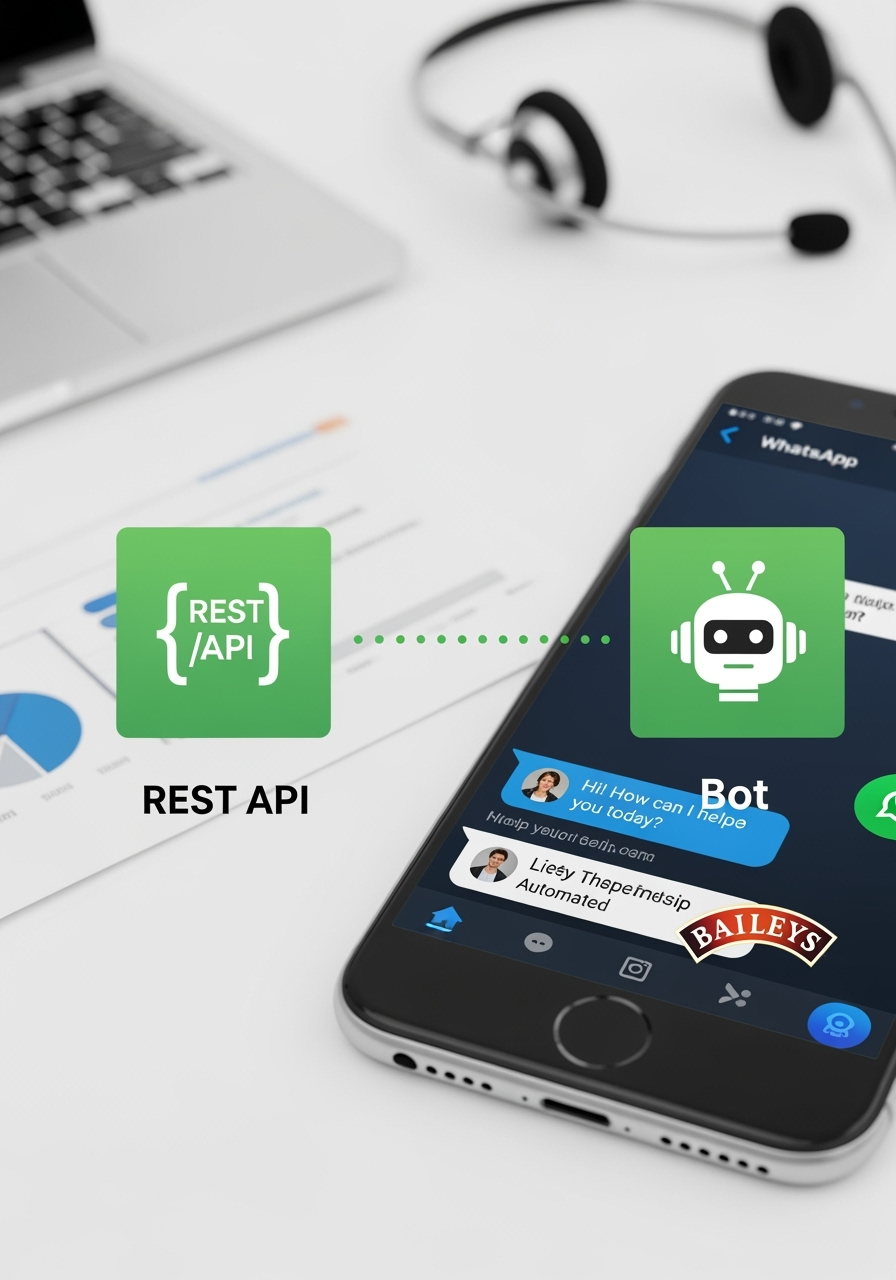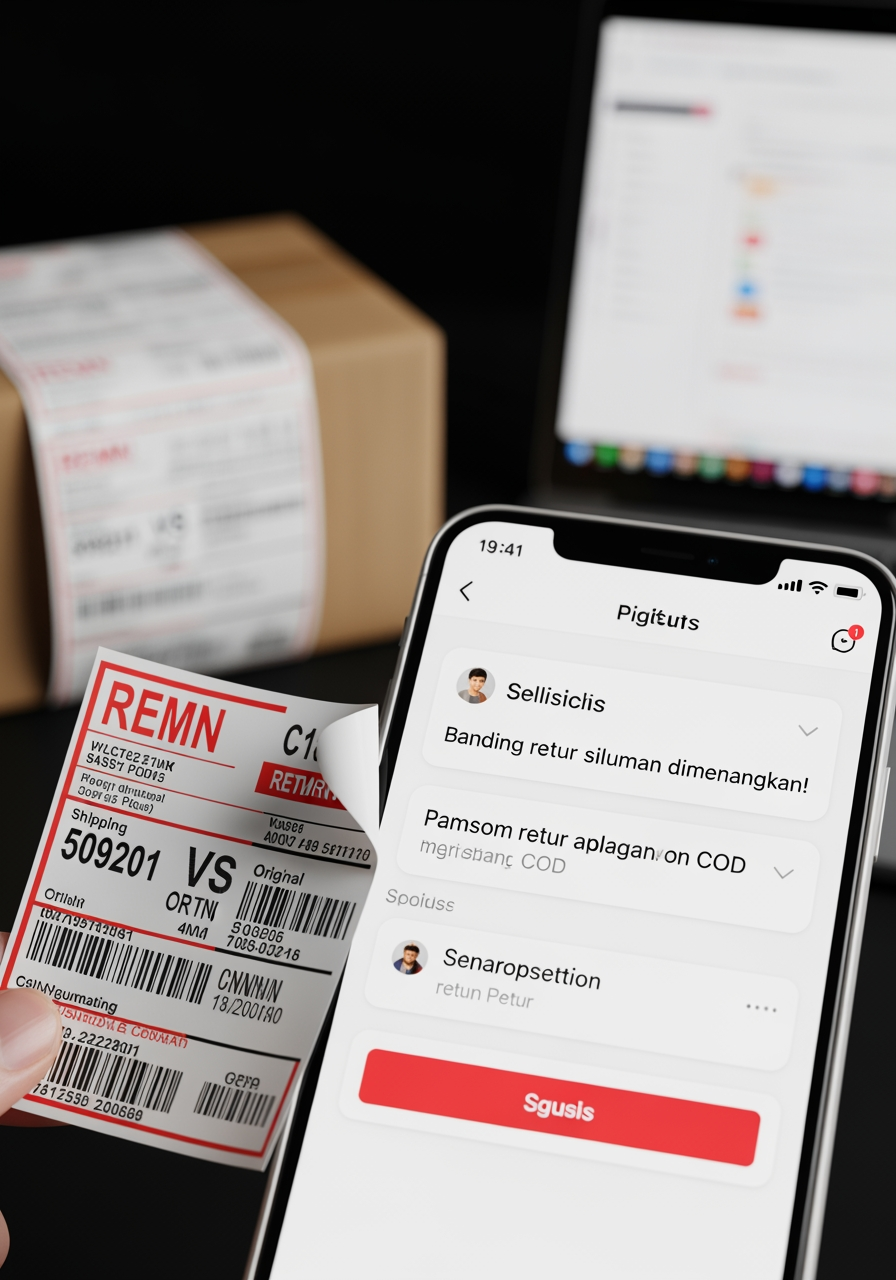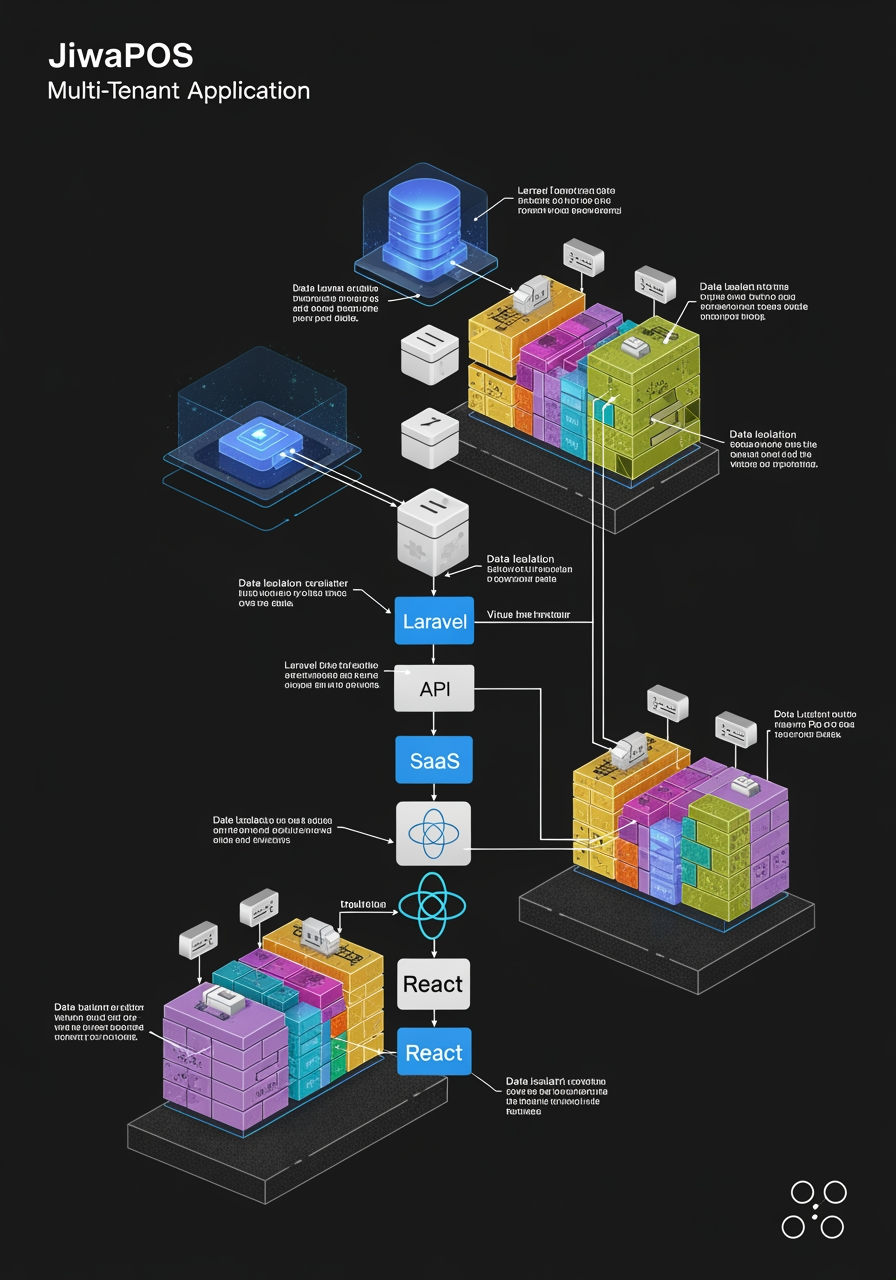Buat WhatsApp Gateway Handal: REST API & Bot dengan Baileys

Building a Production-Ready WhatsApp Gateway with Baileys: REST API + Interactive Bot
WhatsApp integration has become essential for modern businesses, but creating a reliable, scalable solution that serves both automated applications and human users can be challenging. In this comprehensive guide, I'll walk you through building a hybrid WhatsApp gateway that combines a robust REST API with an intelligent interactive bot.
The Challenge
Most WhatsApp integration solutions fall into two categories:
- Simple bots - Great for user interaction but limited API capabilities
- Basic APIs - Good for sending messages but lack intelligence for incoming messages
What if you could have both? A system that provides a clean REST API for your applications while simultaneously handling user interactions intelligently.
Our Solution: Hybrid Architecture
We've built a production-ready system that offers:
- REST API Gateway for external applications
- Interactive Bot for direct WhatsApp users
- Shared WhatsApp connection for efficiency
- Complete multimedia support for all message types
- Production deployment with systemd/PM2
- Environment-based configuration for different setups
Technology Stack
Core Technologies
- Node.js with Express.js for the web server
- Baileys library for WhatsApp Web API integration
- Multer for secure file upload handling
- dotenv for environment configuration
Production Features
- Systemd service integration
- PM2 process management
- Ubuntu VPS deployment
- Comprehensive logging system
Architecture Overview
graph TD
A[External Apps] -->|REST API| B[Express Server]
C[WhatsApp Users] -->|Messages| D[Baileys Connection]
B --> D
D -->|Responses| C
D -->|API Responses| A
B --> E[File Storage]
D --> F[Interactive Bot Logic]
B --> G[API Endpoints]
Key Features Breakdown
1. REST API Gateway
The API provides clean endpoints for external applications:
// Send text message
POST /api/send-message
{
"phone": "6281234567890",
"message": "Hello from API!"
}
// Send image with caption
POST /api/send-image
Content-Type: multipart/form-data
- phone: 6281234567890
- caption: "Check this out!"
- file: [image file]
Supported media types:
- Images (JPG, PNG, GIF, WebP) - up to 16MB
- Documents (PDF, DOC, XLS, etc.) - up to 32MB
- Audio files (MP3, WAV, OGG) - up to 16MB
- Videos (MP4, AVI, MOV) - up to 64MB
- Stickers (WebP) - up to 1MB
2. Interactive Bot
The bot automatically responds to incoming messages with intelligent features:
// Auto-responses User sends image → Bot replies with image + caption User sends audio → Bot replies with voice note + confirmation User sends "/help" → Bot shows command menu // Smart commands /multimedia - Show all media features /foto - Send sample image /meme - Generate random meme /info - System information
3. Environment Configuration
Flexible configuration allows different deployment scenarios:
# Full hybrid mode (default) ENABLE_API=true ENABLE_INTERACTIVE_BOT=true # API-only mode ENABLE_API=true ENABLE_INTERACTIVE_BOT=false # Bot-only mode ENABLE_API=false ENABLE_INTERACTIVE_BOT=true
Implementation Highlights
Shared Connection Management
One of the trickiest parts was ensuring both the API and interactive bot share a single WhatsApp connection efficiently:
// Single connection serves both functions
sock.ev.on('messages.upsert', async (messageUpdate) => {
// Handle interactive bot responses
if (config.enableInteractiveBot) {
await handleInteractiveBotMessage(sock, message, sender, senderName)
}
})
// API uses same connection for sending
async function sendWhatsAppMessage(phone, content) {
return await sock.sendMessage(formatPhoneNumber(phone), content)
}
Robust Error Handling
Production systems need comprehensive error handling:
// API endpoint with retry logic
async function sendWhatsAppMessage(phone, content, retries = 3) {
for (let attempt = 1; attempt <= retries; attempt++) {
try {
return await sock.sendMessage(formattedPhone, content)
} catch (error) {
if (attempt === retries) throw error
await new Promise(resolve => setTimeout(resolve, 1000 * attempt))
}
}
}
Secure File Handling
File uploads require careful validation and cleanup:
// Secure filename generation
const timestamp = Date.now()
const randomStr = Math.random().toString(36).substring(2, 8)
const ext = path.extname(file.originalname).toLowerCase()
const basename = path.basename(file.originalname, ext).replace(/[^a-zA-Z0-9]/g, '_')
const filename = `${timestamp}_${randomStr}_${basename}${ext}`
// Automatic cleanup after sending
try {
await sendWhatsAppMessage(phone, { image: imageBuffer, caption })
} finally {
safeDeleteFile(filePath) // Always clean up
}
Production Deployment
Systemd Service
For reliable production deployment, we use systemd:
[Unit] Description=WhatsApp Hybrid Gateway After=network.target [Service] Type=simple User=whatsapp-gateway WorkingDirectory=/home/whatsapp-gateway/app ExecStart=/usr/bin/node app.js Restart=always RestartSec=5 Environment=NODE_ENV=production EnvironmentFile=/home/whatsapp-gateway/app/.env [Install] WantedBy=multi-user.target
Process Management with PM2
Alternative deployment with PM2 process manager:
// ecosystem.config.js
module.exports = {
apps: [{
name: 'whatsapp-gateway',
script: 'app.js',
instances: 1,
autorestart: true,
max_memory_restart: '1G',
env_production: {
NODE_ENV: 'production',
ENABLE_API: 'true',
ENABLE_INTERACTIVE_BOT: 'true'
}
}]
}
Performance Optimizations
Connection Stability
Maintaining stable WhatsApp connections requires careful handling:
// Reconnection logic with exponential backoff
sock.ev.on('connection.update', async (update) => {
const { connection, lastDisconnect } = update
if (connection === 'close') {
const shouldReconnect = lastDisconnect?.error?.output?.statusCode !== DisconnectReason.loggedOut
if (shouldReconnect) {
const delay = Math.min(5000 * connectionAttempts, 30000)
setTimeout(() => startWhatsAppBot(), delay)
}
}
})
Memory Management
Proper cleanup prevents memory leaks:
// Clean up media files after processing
function safeDeleteFile(filePath) {
try {
if (fs.existsSync(filePath)) {
fs.unlinkSync(filePath)
}
} catch (error) {
log(`Error deleting file: ${error.message}`, 'ERROR')
}
}
// Graceful shutdown
process.on('SIGTERM', () => {
server.close(() => {
if (sock) sock.end()
process.exit(0)
})
})
Real-World Usage Examples
E-commerce Integration
// Automated order confirmations
POST /api/send-message
{
"phone": "6281234567890",
"message": "Order #12345 confirmed! Delivery in 2-3 days."
}
// Send invoice documents
POST /api/send-document
- phone: 6281234567890
- caption: "Invoice for Order #12345"
- file: invoice.pdf
Customer Support
// Interactive bot handles common queries
User: "What are your hours?"
Bot: "We're open Monday-Friday 9AM-6PM. Type /help for more options."
// Escalate to API for complex issues
if (message.includes("speak to human")) {
await notifySupport(sender, message) // API integration
}
Marketing Campaigns
// Bulk messaging via API
const customers = await getCustomerList()
for (const customer of customers) {
await sendWhatsAppMessage(customer.phone, {
image: promotionImage,
caption: `Hi ${customer.name}! Check out our new offers!`
})
}
Monitoring and Maintenance
Health Monitoring
Built-in endpoints for system monitoring:
// Health check endpoint
GET /api/health
{
"status": "ok",
"services": {
"whatsapp_bot": "connected",
"api_server": "running"
},
"uptime": 1234.56
}
Logging Strategy
Comprehensive logging for debugging:
// Structured logging with levels
function log(message, level = 'INFO') {
const timestamp = new Date().toISOString()
const logMessage = `[${timestamp}] [${level}] ${message}`
console.log(logMessage)
if (config.logToFile) {
fs.appendFileSync('./logs/app.log', logMessage + '\n')
}
}
// Separate API and Interactive logs
log(`API: Text sent to ${phone}`, 'INFO')
log(`Interactive: Response sent to ${senderName}`, 'INFO')
Security Considerations
API Authentication
Optional but recommended for production:
// Environment-based API key
if (config.apiKey) {
app.use('/api', authenticateAPI)
}
function authenticateAPI(req, res, next) {
const apiKey = req.headers['x-api-key']
if (!apiKey || apiKey !== config.apiKey) {
return res.status(401).json({ error: 'Unauthorized' })
}
next()
}
File Upload Security
Comprehensive validation prevents malicious uploads:
// File type validation
const allowedTypes = ['jpg', 'jpeg', 'png', 'gif', 'webp']
const ext = path.extname(file.originalname).toLowerCase().slice(1)
if (!allowedTypes.includes(ext)) {
throw new Error(`Invalid file type. Allowed: ${allowedTypes}`)
}
// Size limits per media type
const maxSizes = {
images: 16 * 1024 * 1024, // 16MB
documents: 32 * 1024 * 1024, // 32MB
videos: 64 * 1024 * 1024 // 64MB
}
Lessons Learned
1. Connection Reliability is Critical
WhatsApp connections can be unstable. Implement robust reconnection logic with exponential backoff.
2. File Handling Requires Care
Always validate, limit file sizes, and clean up temporary files to prevent security issues and disk space problems.
3. Environment Configuration is Essential
Different deployment scenarios (development, staging, production) require flexible configuration.
4. Monitoring is Non-negotiable
Production systems need comprehensive logging, health checks, and alerting.
5. Documentation Drives Adoption
Clear API documentation and setup guides are crucial for team adoption and maintenance.
Future Enhancements
Planned Features
- Webhook Support - Real-time notifications for incoming messages
- Message Templates - Pre-defined message formats
- Analytics Dashboard - Usage statistics and metrics
- Multi-device Support - Handle multiple WhatsApp accounts
- Message Scheduling - Send messages at specific times
Scaling Considerations
- Load Balancing - Multiple instances for high traffic
- Database Integration - Store conversation history
- Queue System - Handle bulk message sending
- Microservices - Split API and bot into separate services
Getting Started
Ready to build your own WhatsApp gateway? Here's how to get started:
- Clone the repository
git clone https://github.com/yourusername/whatsapp-hybrid-gateway
- Follow the setup guide in the README
- Configure for your use case (API-only, bot-only, or hybrid)
- Deploy to production using systemd or PM2
- Monitor and maintain using built-in health checks
Conclusion
Building a production-ready WhatsApp gateway requires careful consideration of architecture, security, reliability, and maintainability. By combining REST API functionality with interactive bot capabilities, we've created a flexible solution that serves both automated applications and human users.
The hybrid approach offers several advantages:
- Single codebase for multiple use cases
- Shared resources and connection management
- Flexible deployment options
- Comprehensive feature set
Whether you need a simple API for sending notifications or a sophisticated bot for customer interaction, this hybrid architecture provides a solid foundation that can scale with your needs.
The complete source code, documentation, and deployment guides are available on GitHub. Try it out and let us know how it works for your use case!
This article demonstrates building production-ready software with proper architecture, security, and deployment practices. The WhatsApp integration shown is for legitimate business use and should comply with WhatsApp's Terms of Service.


